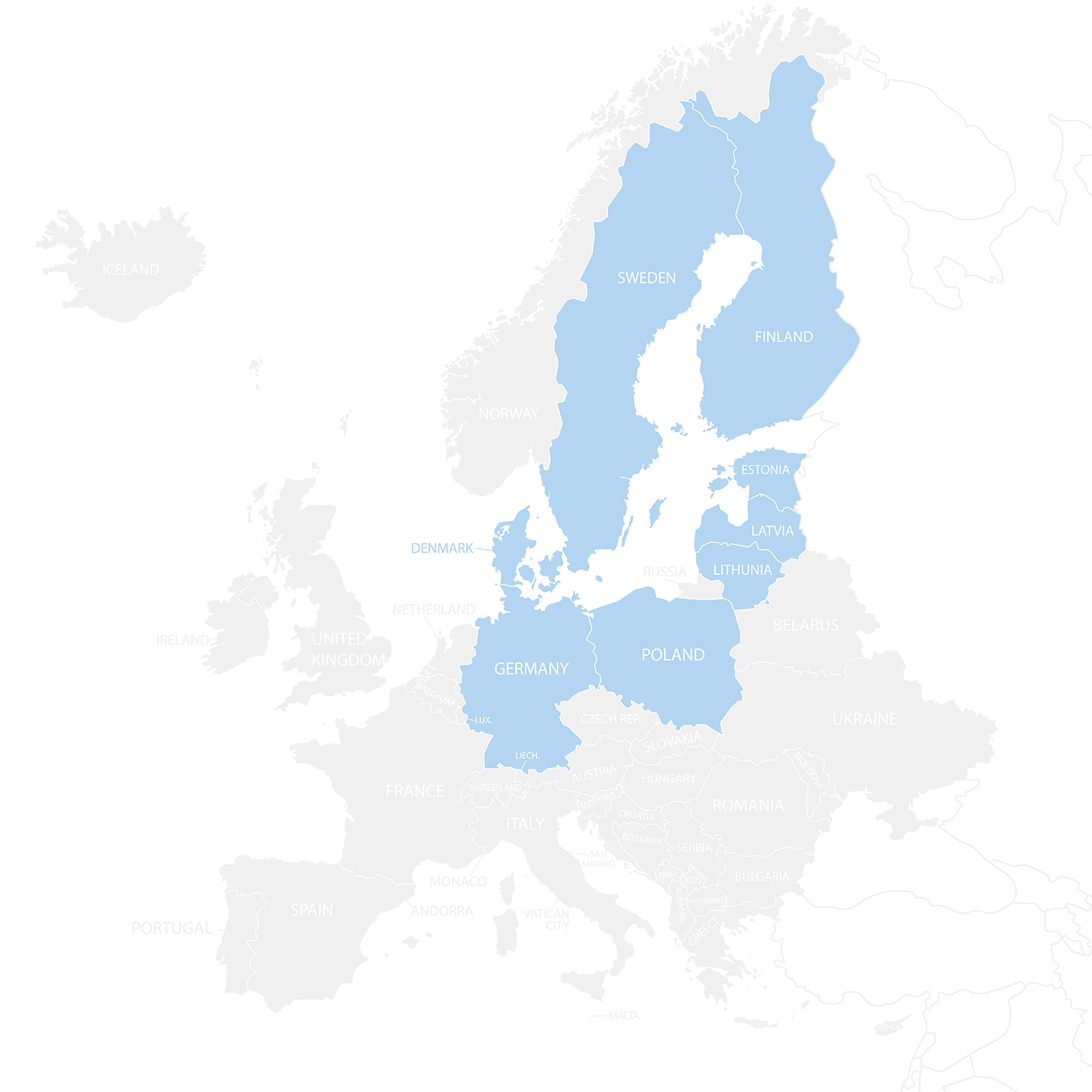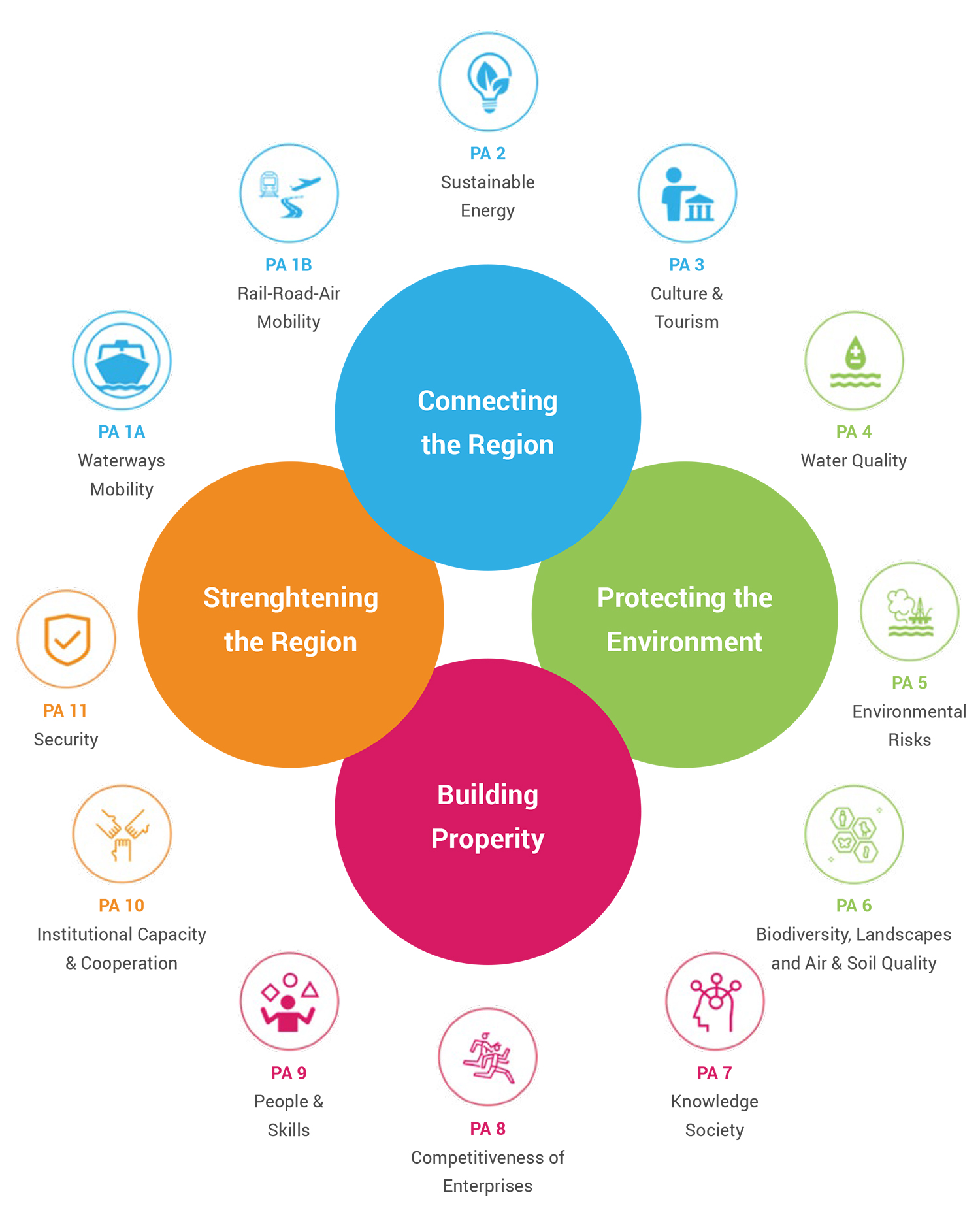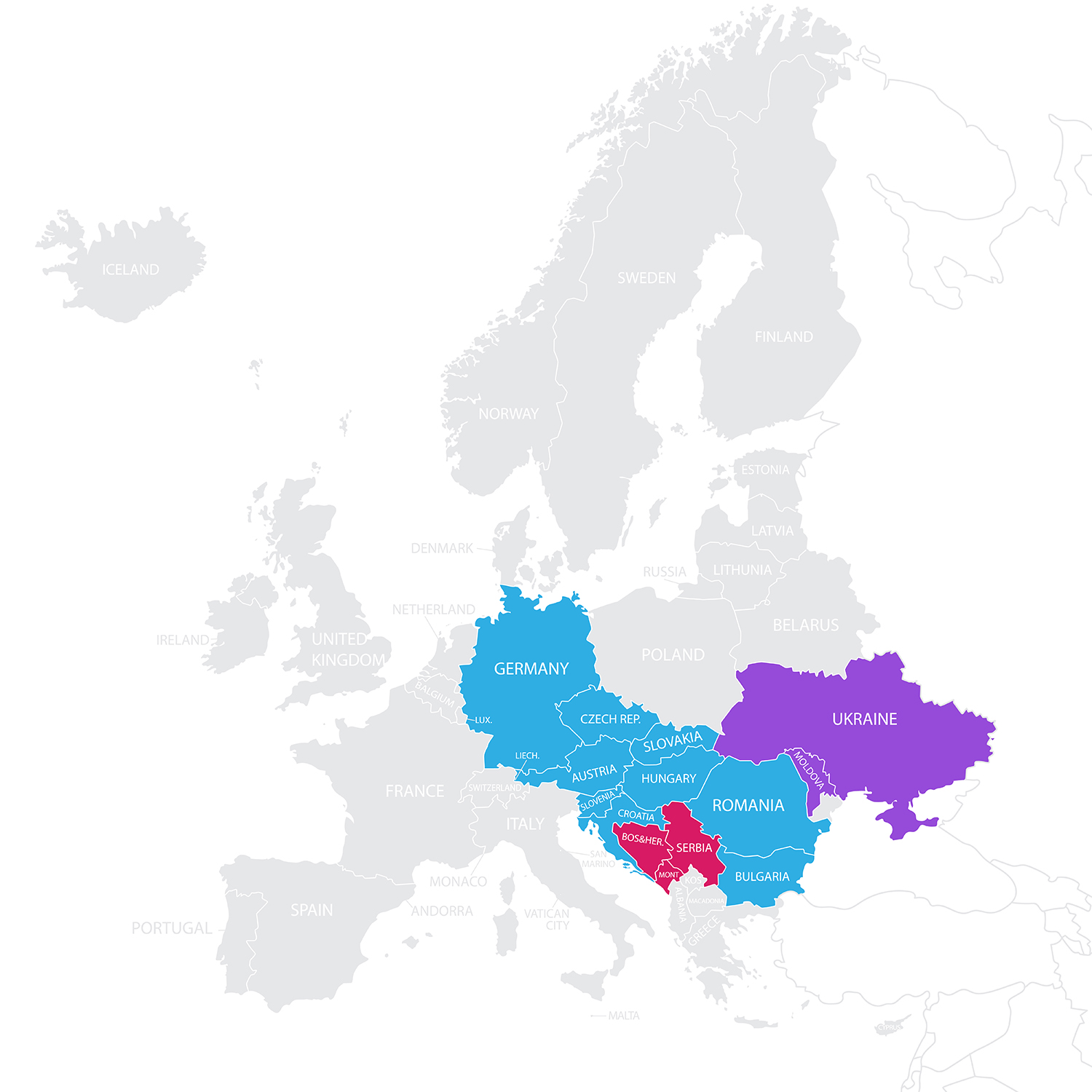The EU Regional Strategies EUSBSR and EUSDR
By means of regional strategies the EU supports the development and interrelationship of macro-regional cooperation. The objective of these strategies is to strengthen multi-level and transparent collaboration amongst bordering EU Member States in order to meet the common challenges and benefit from collective opportunities facing those regions.
The implementation of these regional strategies is coordinated in close contact with the European Commission and relevant stakeholders, i.e. EU Member States, regional and local authorities, inter-governmental and non-governmental bodies as well as the respective EU neighbouring countries.
The wide thematic coverage of objectives within these regional strategies provides opportunities for different kinds of stakeholders to participate and propose various kinds of activities that must particularly consider EU climate and environmental policies. The strategy promotes the building-up of longer-term networks and platforms, processes and projects – new stakeholders as well as novel ideas and initiatives are welcome.
Funding for these actions is intended to derive from various financial instruments. In the period from 2021 until 2027, the Interreg region transnational programmes continue to support the implementation of the strategies. Further EU funding sources include amongst others the European Regional Development Fund, European Agricultural Fund for Rural Development, European Social Fund+, European Maritime and Fisheries Fund, Horizon Europe, TEN-T, Erasmus+, LIFE and the Connecting Europe Facility.

EuroAccess Macro-Regions is the online information and search tool for respective EU-funding. This tool is a central online information portal on EU funding opportunities for the EU regional strategies. It collects and disseminates data of more than 200 EU funding programmes that operate within the geographical scope of the regional strategies.
In the following, two EU regional strategies are presented. In total, there are four EU regional
strategies. In the upcoming EUFUNDINGMAG edition we will inform about those.
The EU strategy for the Baltic Sea Region
The European Union Strategy for the Baltic Sea Region (EUSBSR) was established in 2009 as the first macro-regional strategy in Europe. The EUSBSR is divided into three objectives, which represent the three key challenges of the strategy:
Saving the sea
Connecting the region
Increasing prosperity

These three objectives involve the following sub-objectives:
Clear water in the sea
Reliable energy markets
Better cooperation in fighting cross-border crime
Rich and healthy wildlife
Good transport conditions
Improved global competitiveness of the Baltic Sea Region
Clean and safe shipping
Connecting people in the region
Climate change adaptation, risk prevention and management
The EUSBSR encompasses EU Member States bordering the Baltic Sea region, i.e. Sweden, Denmark, Estonia, Finland, Germany, Latvia, Lithuania and Poland.
The EU Strategy for the Danube Region
The 2011 established EU strategy for the Danube Region (EUSDR) addresses a wide range of sectors which are divided into 4 pillars and 12 sub-priority areas. Each priority area is managed by two countries as Priority Area Coordinators (PACs).

The area of the EUSDR is home to 115 million inhabitants and stretches from the Black Forest in Germany to the Black Sea coasts of Romania, Ukraine, and Moldova.
EU Member States
- Austria
- Bulgaria
- Croatia
- Czech Republic
- Germany
- Hungary
- Romania
- Slovakia
- Slovenia
Accession Countries
- Bosnia and Herzegovina
- Montenegro
- Serbia
Neighbouring Countries
- Moldova
- Ukraine

The EU Regional Strategies EUSBSR and EUSDR
EU funding news and articles. All new articles in one place!
Do you want to read all the articles ahead ? Subscribe now and receive our online magazine each month!


Recent Comments